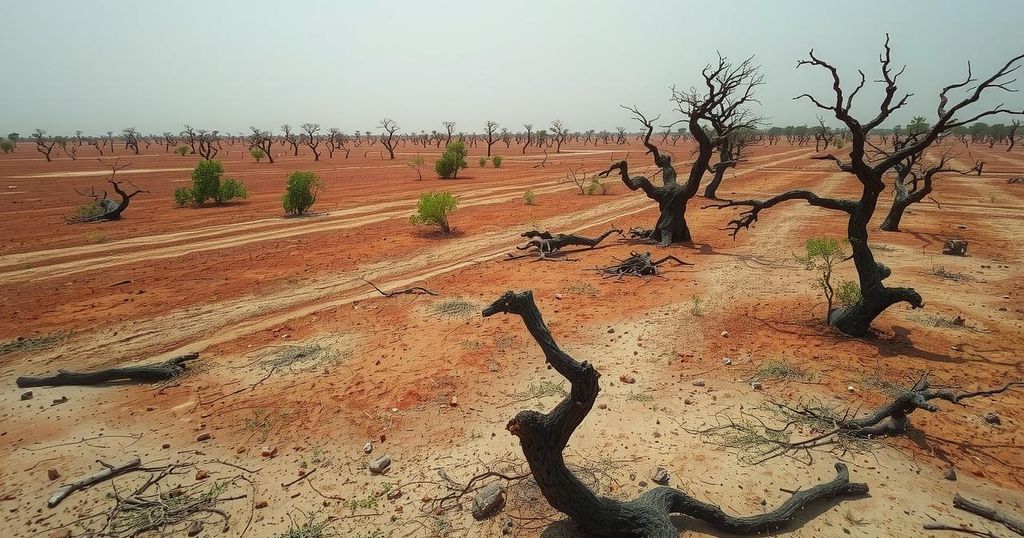Environmental Disaster: Wastewater Leakage in Zambia’s Copperbelt
An embankment breach at a copper mine in Zambia released over 50 million liters of wastewater into the Mwambashi River, causing significant environmental damage and threatening public health. The incident led to the death of fish, crop destruction, and disrupted water supplies, impacting the livelihoods of many. The Zambian government has initiated an investigation, emphasizing the need for stronger regulatory measures to prevent future occurrences.
On February 18, an embankment storing wastewater from copper mining operations in Zambia ruptured, releasing over 50 million liters into the Mwambashi River, which feeds into the Kafue River, a critical water source in the country. This incident occurred at a copper mine operated by Sino-Metals Leach Zambia in Kitwe District, leading to severe environmental damage and public health concerns.
The release of potentially highly acidic effluent has resulted in a significant die-off of fish species and damage to vital crops, consequently disrupting the water supply to nearby communities. Approximately 60% of Zambia’s 20 million residents rely on the Kafue River Basin for essential activities such as irrigation and fishing, amplifying the repercussions of this disaster.
The Zambian government acknowledged the adverse effects on maize and groundnut crops, although it is still assessing the full extent of the damage. The fallout from this disaster has profound environmental, social, and economic implications, including the contamination of water sources with toxic heavy metals, disruption of local ecosystems, and health risks to communities that depend on these waters for consumption.
Further consequences of the pollution include hazardous irrigation practices and bioaccumulation of toxins in the food supply chain. The local economies linked to fisheries, agriculture, and tourism are facing significant setbacks due to this incident, alongside the high costs associated with cleanup and restoration efforts.
The area affected is situated within the Kafue Flats Key Biodiversity Area, which is home to diverse wildlife, including the endemic Kafue lechwe and numerous bird species such as the vulnerable Wattled Cranes and endangered vultures. Thus, the ecological significance of the region cannot be overstated, highlighting the urgency for remediation efforts.
In response to this environmental catastrophe, the Zambian government has initiated an independent investigation concerning mining-related pollution. Concurrently, organizations such as BirdWatch Zambia have formed coalitions to address the pollution crisis and advocate for better environmental protection measures.
Mary Malasa, Program Manager at BirdWatch Zambia, commented on the situation, stating, “This is not the first time a disaster of this nature has occurred, and the level of damage witnessed—both to people and the environment—is unacceptable. Such incidents are preventable. While we commend the Zambian government for responding, a proactive approach is better than a reactive approach.” Moreover, BirdWatch Zambia is urging the Zambia Environmental Management Agency to bolster regulatory oversight and implement stringent measures to prevent future incidents.
The environmental disaster in Zambia highlights the challenges related to mining operations and their impact on local communities and ecosystems. The recent wastewater leak has not only harmed aquatic life and destroyed agricultural lands but also raised serious health concerns for the population relying on the Kafue River. The call for improved regulatory measures underscores the need for immediate and long-term strategies to prevent such incidents, ensuring the protection of both the environment and public health.
Original Source: www.birdlife.org




Post Comment